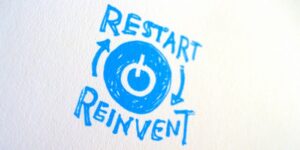The New Rules Of Leadership
Spring is in the air, the days are getting longer and the crocuses are poking up their hopeful heads. Yet, these remain bleak times for
Spring is in the air, the days are getting longer and the crocuses are poking up their hopeful heads. Yet, these remain bleak times for
You know the story. Once upon a time, companies courted new talent with the promise of a lifelong relationship. “Work” meant employment, training, benefits, and

The balance of power is shifting in the employer/employee relationship. What does it mean for the future of work? The #TChat crowd weighs in

The balance of power is shifting in the employer/employee relationship. What does it mean for the future of work? The #TChat crowd weighs in

The balance of power is shifting in the employer/employee relationship. What does it mean for the future of work? The #TChat crowd weighs in

The balance of power is shifting in the employer/employee relationship. What does it mean for the future of work? The #TChat crowd weighs in

Why is this “The Year of Big Data” in HR? And what will it take for HR decision makers to gain business value from a rapidly rising tide of data? Our community takes a closer look…
How can organization’s leverage human capital management practices and technologies in today’s world of work? Enterprise talent expert Josh Bersin helped us look look closer at this issue…
When organizations make learning a cultural imperative, it can lead to a sustainable business advantage. But that’s easier said than done. Talent management expert Josh Bersin leads the #TChat conversation this week…